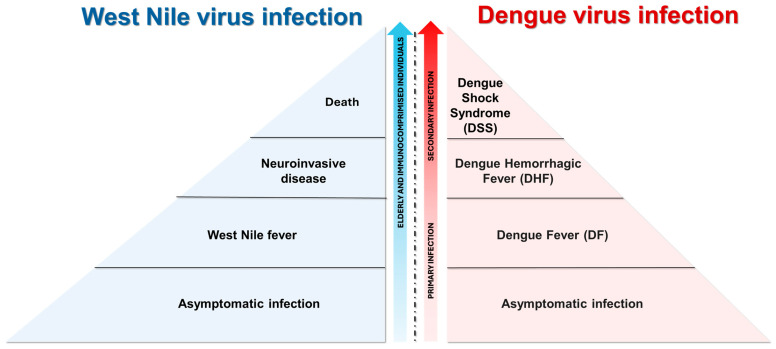Figure 5.
Clinical manifestation of West Nile virus (WNV) and dengue virus (DENV) infection. The majority of WNV infections (80%) are asymptomatic, while the remaining of infections (20%) present with flu-like symptoms (i.e., headache, myalgia, fever, maculopapular rash, and gastrointestinal symptoms) [143,144]. Less than 1% of WNV-infected patients develop neuroinvasive diseases such as meningitis and meningoencephalitis and, among them, 10% had fatal outcomes [144,145]. People who are at a greater risk of developing severe WNV infection are the elderly and immune-compromised individuals [146]. Generally, DENV infections are asymptomatic. However, DENV-infected patients may develop symptoms ranging from dengue fever (DF, characterized by mild flu-like syndrome) to dengue hemorrhagic fever (DHF, marked by decreased circulating plasma volume) and dengue shock syndrome (DSS, distinguished by multi-organ failure) [147]. A severe outcome related to DENV infection depends on previous exposure to the virus: heterotypic infections with a different DENV serotype, in comparison to the primary infection, pose the risk for individuals to develop severe illnesses [148]. The above image was created with https://www.biorender.com/ (accessed on 15 July 2024).

